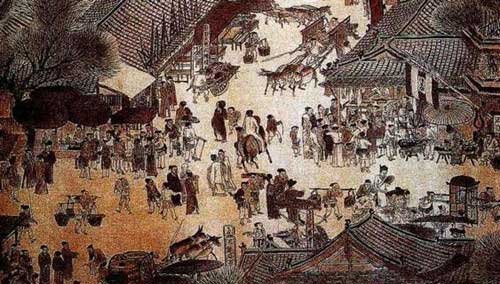- +86-13267351235
- info@globalstourtravels.com
The concept of "small tales" emerged first in Zhuangzi- What comes from Without: 'Those who dress up their small tales to obtain favor with the magistrates are far from being men of great understanding." Here "small tales" mainly refers to trivial hearsay. "Novels" as a literary genre emerged first in the Tang Dynasty and were called "legends" then. Generally speaking, Chinese ancient novels underwent three courses of great development: first, people of the Tang Dynasty "began to write novels" including representative legends of the Tang Dynasty such as Story of Liu Yi, Story of Yingying, Story of Li Wa and Story of Huo Xiaoyu\ second, the emergence of storytellers' scripts in the Song Dynasty and the emergence of novels written in the style of storytellers' scripts in the Ming Dynasty promoted ancient novels' development; third, chapter-based novels of the Ming and Qing dynasties represented by Romance of the Three Kingdoms, Water Margin, Journey to the West and Dream of the Red Chamber pushed the development of ancient novels to the peak.

In terms of creation methods, Chinese ancient novels particularly focus on arrangement of stories and plots and depiction of characters and images. For example, the reason why Romance of the Three Kingdoms and Water Margin are widely known and highly influential is closely related to their legendary plots full of twists and turns and lifelike characters. Because novels were classified as "folk literature" for long in ancient China, targeting the class of ordinary citizens, most of them use language mixing classical Chinese and vernacular Chinese and contain vivid, specific and lifelike images.
"The waters of the mighty Yangtzi flow eastward, its spray drowning countless heroes." Despite changes in time and space and the disappearance of the glint and flash of cold steel, the sky of history is still starry, colorful and lively. As a long historical novel, Romance of the Three Kingdoms vividly and fully presents a picture of heroes in troubled times. This long chapter-based novel with a length of 800,000 Chinese characters depicts a series of grand historical scenes and shapes numerous images of heroes of ideals and integrity against the backdrop of the political and military struggles in the late Eastern Han Dynasty and the Three Kingdoms Period. It is spread widely among people. Read more
Shi Naian (c. 1 296- 1 3 7 1 ), a contemporary of the author of Romance of the Three Kingdoms, created the long novel Water Margin, which depicts heroes, knights-errant, wicked people and robbers, includes funny parts and sad parts and encompasses all feelings in the world. It was handed down from the late Ming Dynasty to today, and its charm was everlasting. Read more
Journey to the West, a gods and demons novel representing the highest accomplishments in the history of Chinese ancient literature, is said to be written by Wu Cheng'en (c. 1500-1582) in the Ming Dynasty. "Narration about gods and demons" is the most prominent artistic characteristic of Journey to the West. The characters in Journey to the West can be mainly classified into three categories: the first is immortals, Buddhist figures and Taoist figures such as Gautama Buddha, Jade Emperor, Queen Mother of the West, Bodhisattva Guanyin, Most Exalted Lord Lao, God Erlang and Nezha; the second is mortals such as Emperor Taizong of the Tang Dynasty, Squire Kou and Marquis Shangguan; the third is monsters such as White Bone Spirit, Yellow Robe Monster, Great King of Miraculous Response, Bull Demon King, Red Boy and Scorpion Spirit. There are brilliant images with distinctive personalities in each category of characters. Read more
After nearly one thousand years of development, Dream of the Red Chamber, the masterpiece among Chinese classical novels, emerged in the 18th century.
Dream of the Red Chamber is also known as The Story of the Stone. After its emergence, it spread in the form of hand-written copies for several decades. "At that time, hardworking people sold each hand-written copy on the market at the price of dozens of tales of gold, and it spread far and wide!" At that time, there was also a saying, "If one does not talk about Dream of the Red Chamber, he has read the Book of Songs and the Book of History in vain." Read more
In the 17th century, a glorious romantic ghost novel emerged in China. It spread widely in the form of hand-written copies at first, was performed on the stage of traditional Chinese opera later, and now has been adapted to films and TV series deeply loved by people. This is Strange Stories from a Chinese Studio, a collection of short novels written in classical Chinese in the Qing Dynasty. Its author was Pu Songling (1640-1715), a native of Zibo, Shandong, called Mr. Liaozhai by people after the name of his studio. Read more